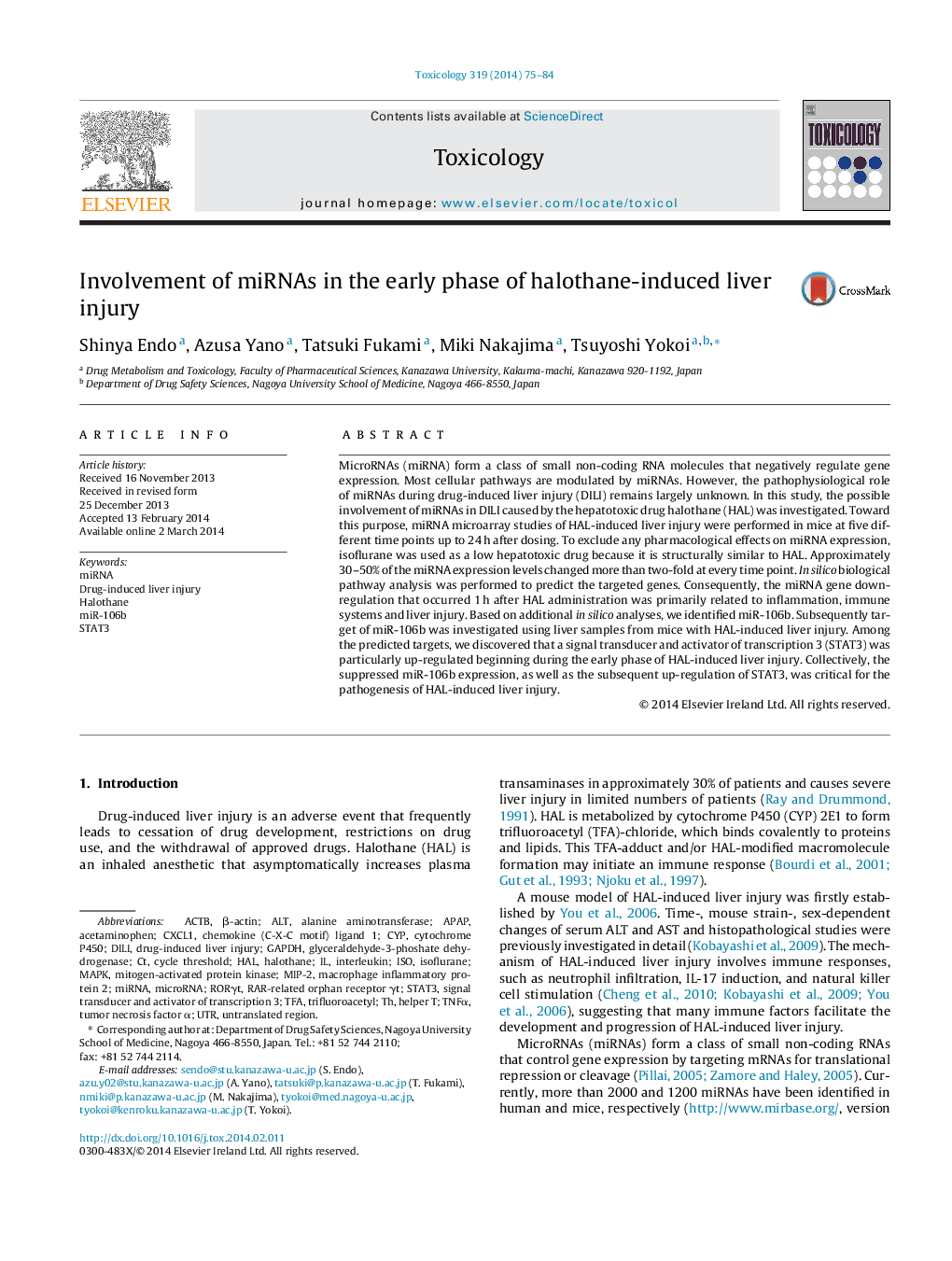| Article ID | Journal | Published Year | Pages | File Type |
|---|---|---|---|---|
| 5859273 | Toxicology | 2014 | 10 Pages |
Abstract
MicroRNAs (miRNA) form a class of small non-coding RNA molecules that negatively regulate gene expression. Most cellular pathways are modulated by miRNAs. However, the pathophysiological role of miRNAs during drug-induced liver injury (DILI) remains largely unknown. In this study, the possible involvement of miRNAs in DILI caused by the hepatotoxic drug halothane (HAL) was investigated. Toward this purpose, miRNA microarray studies of HAL-induced liver injury were performed in mice at five different time points up to 24Â h after dosing. To exclude any pharmacological effects on miRNA expression, isoflurane was used as a low hepatotoxic drug because it is structurally similar to HAL. Approximately 30-50% of the miRNA expression levels changed more than two-fold at every time point. In silico biological pathway analysis was performed to predict the targeted genes. Consequently, the miRNA gene down-regulation that occurred 1Â h after HAL administration was primarily related to inflammation, immune systems and liver injury. Based on additional in silico analyses, we identified miR-106b. Subsequently target of miR-106b was investigated using liver samples from mice with HAL-induced liver injury. Among the predicted targets, we discovered that a signal transducer and activator of transcription 3 (STAT3) was particularly up-regulated beginning during the early phase of HAL-induced liver injury. Collectively, the suppressed miR-106b expression, as well as the subsequent up-regulation of STAT3, was critical for the pathogenesis of HAL-induced liver injury.
Keywords
Related Topics
Life Sciences
Environmental Science
Health, Toxicology and Mutagenesis
Authors
Shinya Endo, Azusa Yano, Tatsuki Fukami, Miki Nakajima, Tsuyoshi Yokoi,
